Drone-on-drone clashes in Ukraine are like WWI dogfights — and tactics are evolving fast
Drone dogfights in Ukraine have drawn comparison to the aerial battles of WWI.
In just two years, drone operators have become much more sophisticated.
BI reviewed over 40 drone dogfights to see some of the main tactics that have emerged.
The sheer scale of drone use in Ukraine has given rise to an increasing battle for the skies, and the rise of drone-on-drone dogfights.
Thousands of uncrewed aerial vehicles take to the skies over Ukraine, serving a wide range of tasks such as directing artillery fire, surveillance, and acting as loitering munitions.
It's a set of tasks so integral to the fighting that earlier this month Ukraine's military launched the world's first stand-alone branch dedicated solely to drone warfare.
Before Russia's full-scale invasion of Ukraine, the world had only seen a handful of drone-on-drone incidents.
But now, Russia and Ukraine are "engaged in a 'drone arms race,' investing vast amounts of money, time, and expertise in developing and countering each other's systems," James Patton Rogers, a drone expert and director of the Cornell Brooks Tech Policy Institute, told BI.
Today, drones that once used their explosive payloads on multimillion-dollar armored vehicles are choosing to target other drones instead because of the threat they pose, Mike Monnik, CEO of drone intelligence platform DroneSec, told BI.
BI reviewed more than 40 videos of drone-on-drone skirmishes over Ukraine, collected and annotated by DroneSec, to identify some of the distinct — and often overlapping — tactics that have rapidly developed in this short period.
(BI was unable to independently verify some of the videos, which are often shared by partisan groups.)
Dropping down from above
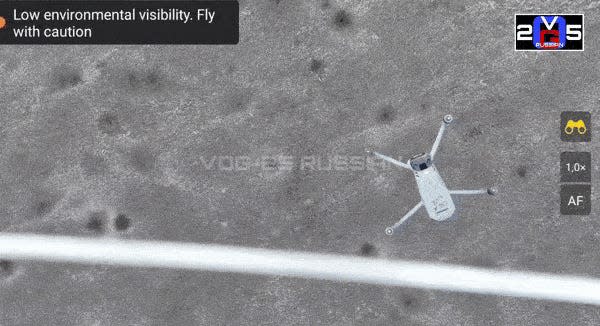
The cheap and plentiful DJI Mavic drone has limited visibility directly overhead — meaning that a drone hovering above is a distinct threat.
The clip above, posted by a pro-Russian channel in early April, shows a Russian drone smashing directly down onto a Ukrainian DJI Mavic-3 drone, sending it tumbling out of the sky.
In early 2022, "much of this was by chance," Monnik said. He described how a small commercial drone out on reconnaissance might notice an enemy drone in the sky, fly above it, and drop down to clip its rotors.
"At this stage, in many occurrences, both drones would actually be disabled," Monnik said.
By 2024, DroneSec said it was seeing first-person view drones kitted out with proximity or remote detonation capabilities.
Crashing into an expensive drone with your cheap one
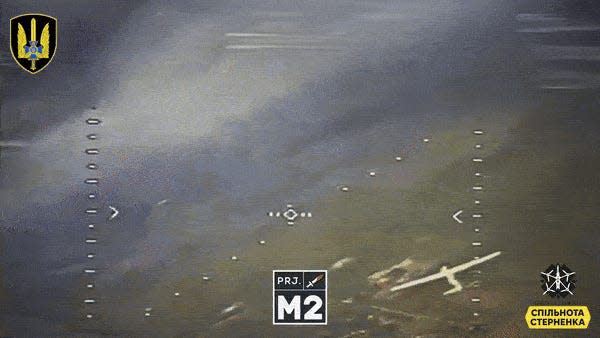
One of the simplest attacks is using an FPV drone to crash into an enemy drone, with or without an explosive attached.
Given that the attacking drone is often a write-off too, the biggest win is when a cheap device takes out something costly.
The above footage, shared on June 1, shows a Russian Orlan-10 drone being pursued by a Ukrainian FPV, with the video then cutting out.
The footage then shows an Orlan on the ground, seemingly destroyed by the encounter.
Orlan drones, which cost between $87,000-$120,000, have proved to be one of the "most critical systems contributing to the lethality" of Russian forces, according to the Royal United Services Institute.
Meanwhile, the most commonly used FPV drones cost just a few thousand dollars.
Dropping explosives on a drone in midair
Another type of attack from above, but this time by releasing an explosive directly onto the drone below, as in this footage of Ukrainian Mavic-3 drones being knocked out by Russian drones from above.
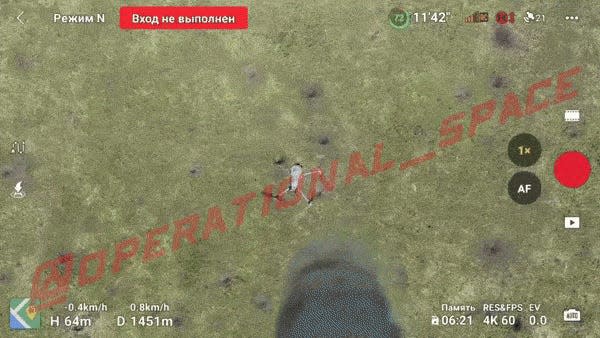
Ukrainian soldiers told BI last year how they began adapting COTS drones to carry munitions that could be dropped from above.
Flinging a net onto an enemy drone
In February 2023, Ukraine's Center for Strategic Communications and Information Security said it had received six US-made DroneHunter F700s, an AI-backed drone that can shoot a net over targets in midair.
Footage shared by the CSCIS shows the tech being used to take out Orlan drones and Shaheds, the large loitering munitions used by Russia to pummel Ukrainian infrastructure.
According to Scientific American, DroneHunter F700s have been in use in Ukraine since May 2022.
It appears Russia may have acquired similar tech. In the below video, posted in April by a pro-Russian account, a small drone — identified as Ukrainian — is ensnared in a net fired from above.

Hassling a drone before it can release its payload
In the footage below, shared in May, a Ukrainian drone strikes an explosive payload carried by a Russian DJI Mavic-3 drone before it can be released, according to DroneSec's analysis.
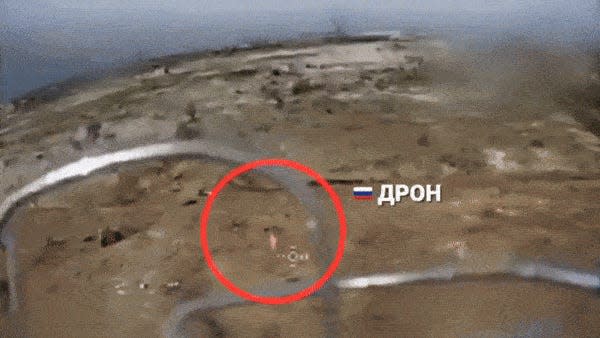
Skip the drone — take out the pilot
There are plenty of other ways of countering enemy drones, including hitting them at their source, Patton Rogers told BI.
Drones can be sent to look for antenna peeking out of windows — "a tell-tale sign of an enemy drone pilot covertly operating," he said.
"Once identified, single or multiple drones will be sent in to eliminate the human drone pilot," he added.
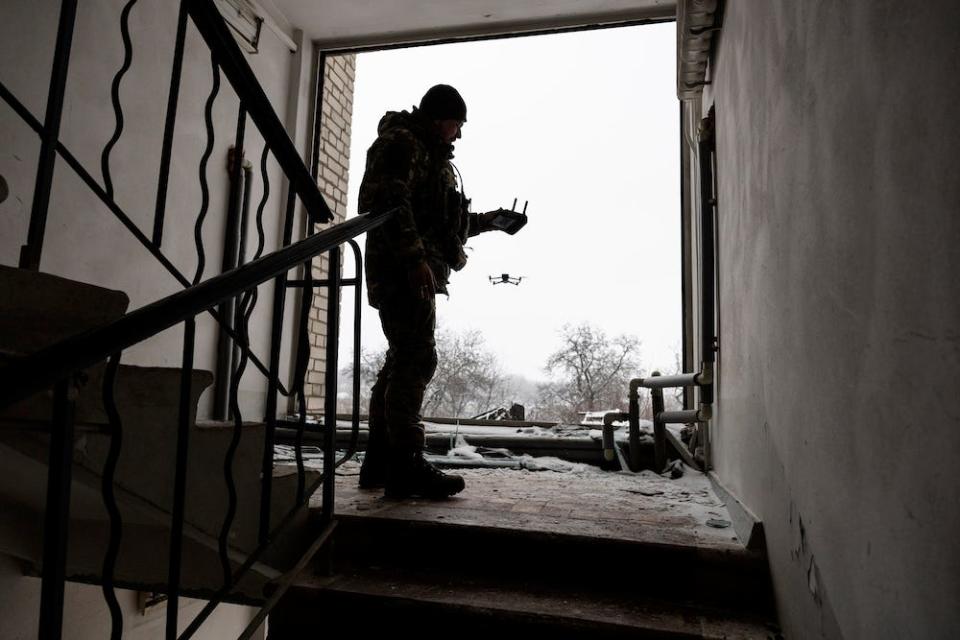
In the future, drones could take down helicopters
According to Scientific American, the market for counter-drone technology could be worth $12.6 billion by 2030, and given drone warfare developments, it might need to be.
Monnik said DroneSec has already seen multiple attempts to use small, weaponized drones to target helicopters and small aircraft.
Aircraft appear to be fighting back — in April, footage shared by multiple accounts showed what was described as a Ukrainian Yak-52 trainer plane taking on an Orlan. Further reporting from The War Zone suggests this is not a lone phenomenon.
Monnik also predicted that we'll soon see drones equipped with gun-like weapon platforms, and a greater prevalence of drones being deployed in swarm-like formations.
It's tempting to compare the phenomenon to the dogfights of World War I more than a century ago, when pilots targeted each other with front-mounted machine guns or even pistols while flying.
"There is still a visceral real-world connection between both warring parties — perhaps more so than WWI air personnel — as pilots attempt to outwit each other," Patton Rogers said.
The last thing many of the drone pilots will see through their doomed drone's viewfinders is the enemy drone — knowing that somewhere, at the other end, an enemy pilot is watching it all on their own headset, he said.
"Such is the morbid intimacy of modern war," he said.
Read the original article on Business Insider


